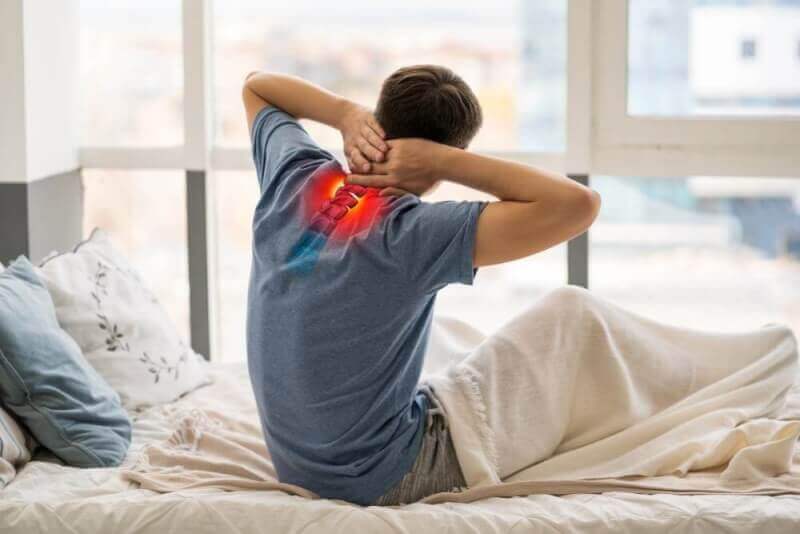What is neck flattening?
Neck flattening, which is seen more and more in today’s technological world, is called cervical lordosis flattening in medical language. There are 33 vertebrae in the spine and seven of them form the neck structure. Due to the structure of the vertebrae, the neck has a curved structure. In neck flattening, the neck is flattened by losing its healthy C-shape. In advanced cases, this may even form an inverted C-shape, forming a hump.
Neck flattening diagnosis
In order for neck flattening to be diagnosed, the medical history of the patients is first taken and a physical examination is performed. Afterwards, if deemed necessary by the physician, various imaging methods are used to confirm and confirm the diagnosis.
X-rays are primarily preferred in these imaging methods. X-rays, which enable the examination of problems in hard tissues, are insufficient for the examination of soft tissues. For this reason, other imaging modalities may also be ordered to detect damage to soft tissues.
Magnetic resonance imaging, known as MRI for short, allows all tissues, especially soft tissues, to be visualized with radio waves. Computed tomography is also used for 3D imaging of organs.
Symptoms of neck flattening
The characteristic symptom of neck flattening is neck pain. This is because the deformation of the spine causes the muscles to move and contract in different directions. This leads to muscle pain. If the neck flattening has become a hump, the pain felt by patients can reach the shoulders and lower back.
In addition, patients can also see the symptoms of neck flattening themselves. Especially when lying on a flat surface, the short distance between the neck and the floor is one of the most important symptoms of neck flattening.
Some patients do not experience any symptoms. However, these patients may notice that they have difficulty with some movements. They may also experience neck flattening headaches. Patients should pay attention to the change in the shape of their neck even if they do not experience any symptoms. In addition, the symptoms seen in patients with neck flattening include the following:
- Difficulty in maintaining muscle control
- Weakness
- Poor bladder control
- Pain that feels like an electric shock
- Tingling
- Neck pain
- Numbness
- Back pain
- Pain in the arms
- Pain in the shoulders
- Fatigue
- Low back pain
- Shortness of breath
- Difficulty swallowing
- Difficulty urinating or defecating
- Forward gaze limitation
- Development of paralysis in one half of the body
Causes of neck flattening
The most important factor that causes neck flattening is that people stay in the wrong position both while sleeping and when they are awake. In addition, performing repetitive movements in various professions is one of the most important causes of neck flattening. In particular, the following mistakes are the most common causes of neck flattening:
- The working environment is not ergonomic
- Having to work at a desk for long hours
- Use of a heavy backpack
- Posture disorders arising from girls’ desire to hide the body, especially during puberty
- Excessive phone use
In addition, other factors that can cause neck flattening include the following.
Degenerative disc disease
With advancing age, the discs between the vertebrae begin to deteriorate. This causes the disks to become thinner and therefore collapse. This change in the spine can result in the neck losing its natural curve. Neck flattening due to degenerative disc disease increases with advancing age.
Iatrogenic disorder
Iatrogenic is a term used to describe the unintended consequences of a medically performed procedure. Another cause of neck flattening can be an iatrogenic disorder. Neck flattening can occur especially after laminescopy surgery to reduce pressure on the spine. This complication of laminescopy is particularly common in children. It can also result from failed cervical spine fusion surgeries because the fusion is too short.
Congenital disorders
Patients may also experience neck flattening due to birth defects. In addition to neck flattening, complications such as kidney or urinary tract defects can also occur in these people. In the case of a congenital flattening of the neck, the shape of the vertebrae also changes during the development of the patient. In these patients, the vertebrae develop in a triangular shape rather than in a circle. This change gives both the vertebrae and the neck an unnatural curvature.
Traumas
One of the most common causes of neck flattening is trauma. If ligaments are broken or torn due to falls, traffic accidents or sports injuries, the spine may bend forward. This can lead to the formation of a spinal cavity.
Tumors and infections
Tumors and infections that develop in the neck area can put pressure on the spine and cause the natural shape of the neck to deteriorate over time.
Complications that can be caused by neck flattening
Neck flattening causes stress on the muscles that start from the back of the head, continue from the neck and continue to the last bone of the spine. This will lead to limitation of movement and reduce the shock absorption capacity of the spine. This makes the spine more vulnerable to trauma and injury. In addition, it is common for patients not to notice this hardening because they are constantly experiencing pain. For this reason, patients may only notice a hardening after they have been injured.
In some cases, injuries can reach the spinal cord. In these cases, patients experience neck pain and a feeling of pressure in the neck, as well as numbness and tingling at the base of the skull, difficulty swallowing and vision.
Neck flattening treatment
If the cause of neck flattening is postural disorders, then the medications used will only relieve the symptoms. Because neck flattening is a mechanical problem. For this reason, restoring the posture of the body is important for the treatment of neck flattening.
Exercises for neck straightening
n the treatment of neck flattening, the physical therapy option is primarily evaluated. Especially in cases where the neck curve does not put pressure on the spinal cord, patients need to strengthen various muscle groups to change their posture. At this point, physical therapy is extremely effective.
Physical therapy can be the first option for people with neck flattening, or it can be applied after surgery. The basic movements that patients should perform, whether for application after surgery or for the initial treatment of neck flattening, are as follows.
- The neck should be rested, especially if the neck flattening is caused by repetitive movements or due to occupation. The use of a cervical collar may also be recommended to avoid activities that strain the neck and to limit excessive movement.
- The lying position of patients with neck straightening is also an important part of the treatment. For this reason, the neck should be supported in the sleeping position. You can get help from specially prepared rolls for this purpose. Physiotherapists also recommend certain lying positions to relieve arm pain.
- Ice application is also among the recommendations to relieve the pain caused by neck flattening. While applying ice, you can also massage the neck area.
- Hot application in neck flattening will also provide pain relief as it will relax the muscles. Applying a hot water bag or a hot bath for only 15 to 20 minutes will be enough.
- Finally, patients with neck flattening need to adjust their sitting position during work, especially if they have a desk job. This may require adjusting the table height and the chair.
Neck flattening surgery
The main treatment for neck flattening is surgical operation. With this procedure, the neck structures of the patients are returned to their normal shape and thus the deformities are eliminated and the muscles are relaxed.
Special conditions of the patients are taken into consideration when determining the surgical method. For this reason, the severity of the flattening and the anatomical structure are at the forefront in determining the method of surgery. Although it is usually performed under local anesthesia, general anesthesia may also be preferred in some patients.
Neck flattening surgery is performed on the front or back of the neck. To correct the deformity, the vertebrae may need to be removed or platinum or screws may be used.
Neck straightening surgery is considered a risky surgery because the intervened area is close to the spinal nerves and large blood vessels. For this reason, the surgeon who will perform the surgery must be an expert in the field.
After 1 to 4 hours of neck straightening surgery, the recovery process of the patients is related to the surgical method applied. Patients are usually discharged within a few days and return to their daily lives in a short time. However, it takes several months for patients to fully recover.
Things to consider to prevent neck flattening
In order to prevent neck flattening, stress should be avoided and stress should be learned to be controlled. In addition, posture positions should be harmonized with the natural posture of the spine and these positions should become a lifestyle. In addition, the points that people should pay attention to in order to prevent neck flattening include the following:
- Avoiding places with strong air currents
- Not going out with wet hair
- Not carrying loads with one arm
- No heavy lifting
- Not staying in a forward-bent position for long periods of time
- Not using high pillows
- Not resting on the edge of the seats for long periods of time
- Not staying in front of appliances such as air conditioners and fans for a long time







